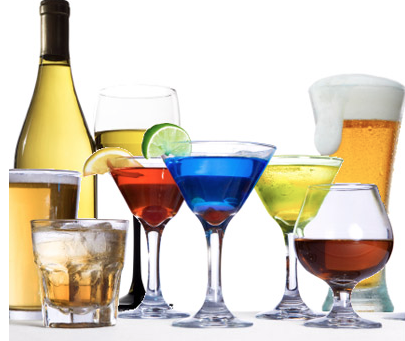Editorial: CDC recommendation to women is condescending

by Shelby Kramer, [email protected]
source: http://cdn.builtlean.com/wp-content/uploads/2012/11/alcohol-weight-loss-1.jpg
February 7, 2016
The Centers for Disease Control told women of child-rearing age who are not on birth control that they shouldn’t consume alcohol – just in case they get pregnant.
“An estimated 3.3 million women between the ages of 15 and 44 years are at risk of exposing their developing baby to alcohol because they are drinking, sexually active, and not using birth control to prevent pregnancy,” according to the CDC report released Feb. 2.
Alcohol use during pregnancy can cause lasting behavioral, physical and intellectual disabilities in children, even if that use is within the first few weeks, before a woman knows she’s pregnant, which is the motivation for the recommendation.
A diagnosis of fetal alcohol syndrome has three major components, according to the Fetal Alcohol Spectrum Disorders Center: distinctive facial features, growth deficiencies and brain damage. The center also states that 1 in 9 pregnant women binge drinks in the first trimester and that 1 in 30 pregnant women drinks at levels shown to increase the risk of FASD. Having a child with FAS can cost $2 million over their lifetime.
The recommendation, while it comes from a good place in an effort to decrease the amount of infants born with fetal alcohol spectrum disorders — which is around one for every 1,000 births each year — is ridiculous, condescending and sexist.
Women aren’t being shy about their thoughts on the recommendation across social media platforms, joining in an uproar of unrealistic expectations of planning their lives around a hypothetical baby.
Lyndsay Kirsham, co-editor of Gender Focus and feminist writer from Toronto, tweeted:
CDC thinks I shouldn’t drink booze *just* in case I accidentally get pregnant.
Nope. We aren’t incubators. pic.twitter.com/8jZChDuU49
— Lyndsay Kirkham (@Lyndsay_Kirkham) February 3, 2016
the #cdc is acting as if women aren’t humans but rather just baby-making vessels
— hannah (@hantaloupe) February 4, 2016
#CDC releases study advising men not to drink alcohol citing high risk of abusing, sexually assaulting, raping women under the influence
— fran (@fran_says_hello) February 4, 2016
The CDC defended its statement, though, saying the recommendation was not meant to insult or undermine women’s right to make that choice for themselves.
Anne Schuchat, principal deputy director of the C.D.C., told The New York Times, “We’re really all about empowering women to make good choices and to give them the best information we can so they can decide what they want to do themselves. Alcohol in that period can be particularly risky, so we wanted to make sure people are aware of that. What they do with that information is, of course, up to them.”
The CDC later released a graphic — a somewhat condescending, obvious graphic — showing the dangers for women when they drink, including injuries, heart disease, violence and STDs.
Where’s the graphic for men’s danger risk when it comes to alcohol? There isn’t.
“Agents that may cause birth defects do not reach the developing fetus through the father as they do from the pregnant mother,” but we do know that male exposure to certain substances can lead to some preliminary problems with fertility and also slightly elevate the risk of certain birth defects,” according to the Organization of Teratology Information Services.
Men who drink alcohol can also be at risk for violence, injuries, heart disease and STDs, and while they’re not carrying a child, excessive alcohol consumption can affect men’s fertility, as well. Dr Patrick O’Brien, spokesperson for the Royal College of Obstetricians and Gynaecologists, told Drink Aware UK that, “Excessive alcohol lowers testosterone levels and sperm quality and quantity in men. It can also reduce libido, and cause impotence.”
So while the recommendation comes from an attempt to decrease the amount of infants born with Fetal Alcohol Spectrum Disorders, it came off as a way to control women’s bodies. In the future, the CDC should be careful of the tone it strikes when suggesting how women, or any other demographic of society, live their lives.
















